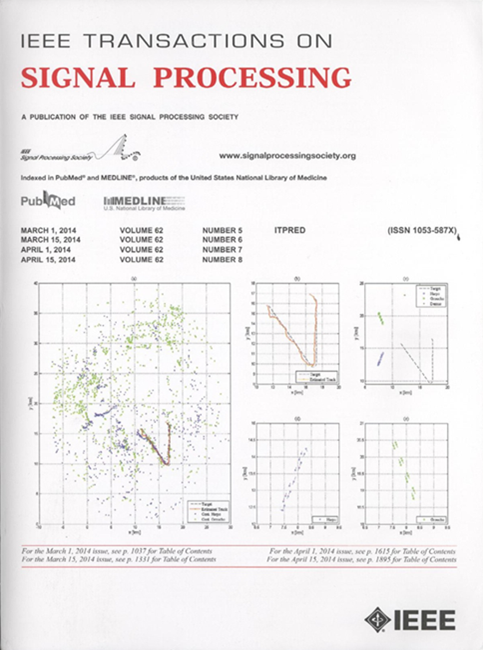ToF-Based NLoS Indoor Tracking With Adaptive Ranging Error Mitigation
IF 4.6
2区 工程技术
Q1 ENGINEERING, ELECTRICAL & ELECTRONIC
引用次数: 0
Abstract
Accurate indoor localization remains a significant challenge, primarily due to multipath and non-line-of-sight (NLoS) propagation conditions in complex indoor environments. Traditional localization methods often rely on oversimplified assumptions or require prior knowledge of channel or ranging error statistics. Unfortunately, these approaches overlook the environment/location-dependent nature of the ranging error, e.g., highly dynamic and unpredictable, resulting in sub-optimal performances in real-world settings. To address these challenges, we introduce a novel Bayesian tracking framework that simultaneously tracks the statistics of ranging errors and target's location for fine-grained ranging error mitigation, without the need for prior knowledge of the channel or environment. The proposed method characterizes the distribution of ranging error using mixture distributions with dynamically updated parameters. A hidden Markov model (HMM) is employed to track the sight condition (i.e. LoS or NLoS) of the propagation channel and adjust the parameters of the ranging error model online. Our proposed framework focuses on 802.11 range-based localization systems and aims to deliver general-purpose localization services where sub-meter level accuracy is sufficient. Experimental evaluations conducted across two real-world indoor scenarios demonstrate that the proposed method significantly improves localization accuracy to 1 meter in challenging multipath and NLoS environments, outperforming existing techniques while maintaining similar computation complexity.基于 ToF 的 NLoS 室内跟踪与自适应测距误差缓解技术
主要由于复杂室内环境中的多径和非视距(NLoS)传播条件,精确的室内定位仍然是一项重大挑战。传统的定位方法通常依赖于过于简化的假设,或者需要事先了解信道或测距误差统计。遗憾的是,这些方法忽视了测距误差与环境/位置相关的特性,例如高度动态和不可预测,从而导致在实际环境中无法达到最佳性能。为了应对这些挑战,我们引入了一种新颖的贝叶斯跟踪框架,该框架可同时跟踪测距误差统计和目标位置,以减轻细粒度测距误差,而无需事先了解信道或环境。所提出的方法使用动态更新参数的混合分布来描述测距误差的分布特征。采用隐马尔可夫模型(HMM)来跟踪传播信道的视线条件(即 LoS 或 NLoS),并在线调整测距误差模型的参数。我们提出的框架侧重于基于 802.11 范围的定位系统,旨在提供通用的定位服务,其中亚米级精度就已足够。在两个真实的室内场景中进行的实验评估表明,所提出的方法在具有挑战性的多径和 NLoS 环境中显著提高了 1 米级的定位精度,在保持类似计算复杂度的情况下优于现有技术。
本文章由计算机程序翻译,如有差异,请以英文原文为准。
求助全文
约1分钟内获得全文
求助全文
来源期刊

IEEE Transactions on Signal Processing
工程技术-工程:电子与电气
CiteScore
11.20
自引率
9.30%
发文量
310
审稿时长
3.0 months
期刊介绍:
The IEEE Transactions on Signal Processing covers novel theory, algorithms, performance analyses and applications of techniques for the processing, understanding, learning, retrieval, mining, and extraction of information from signals. The term “signal” includes, among others, audio, video, speech, image, communication, geophysical, sonar, radar, medical and musical signals. Examples of topics of interest include, but are not limited to, information processing and the theory and application of filtering, coding, transmitting, estimating, detecting, analyzing, recognizing, synthesizing, recording, and reproducing signals.
 求助内容:
求助内容: 应助结果提醒方式:
应助结果提醒方式:


